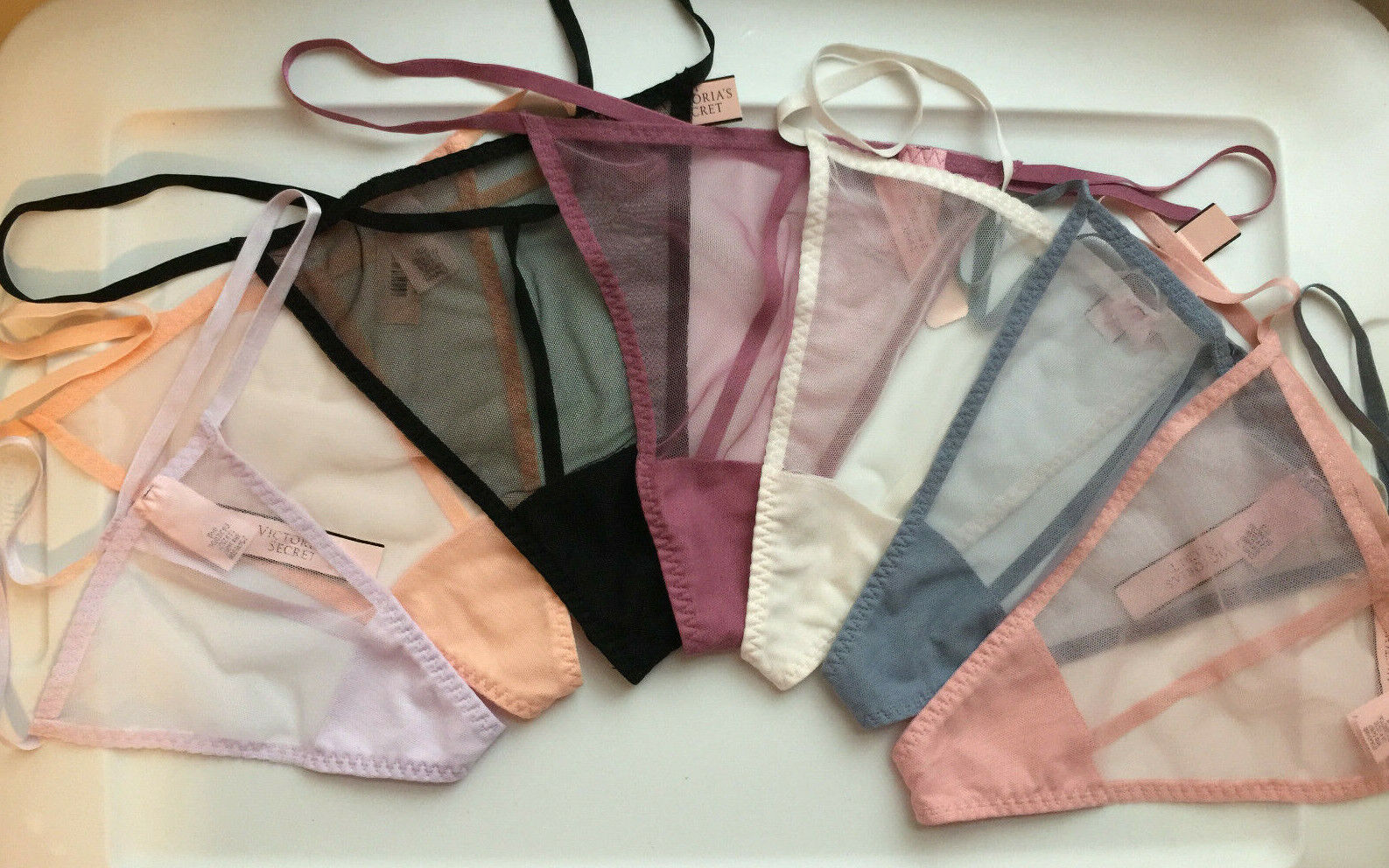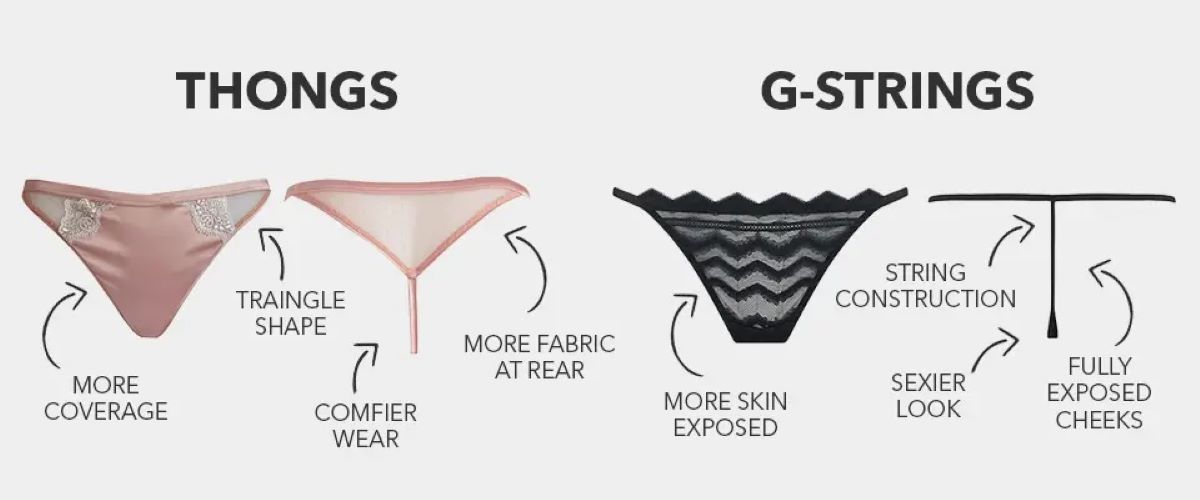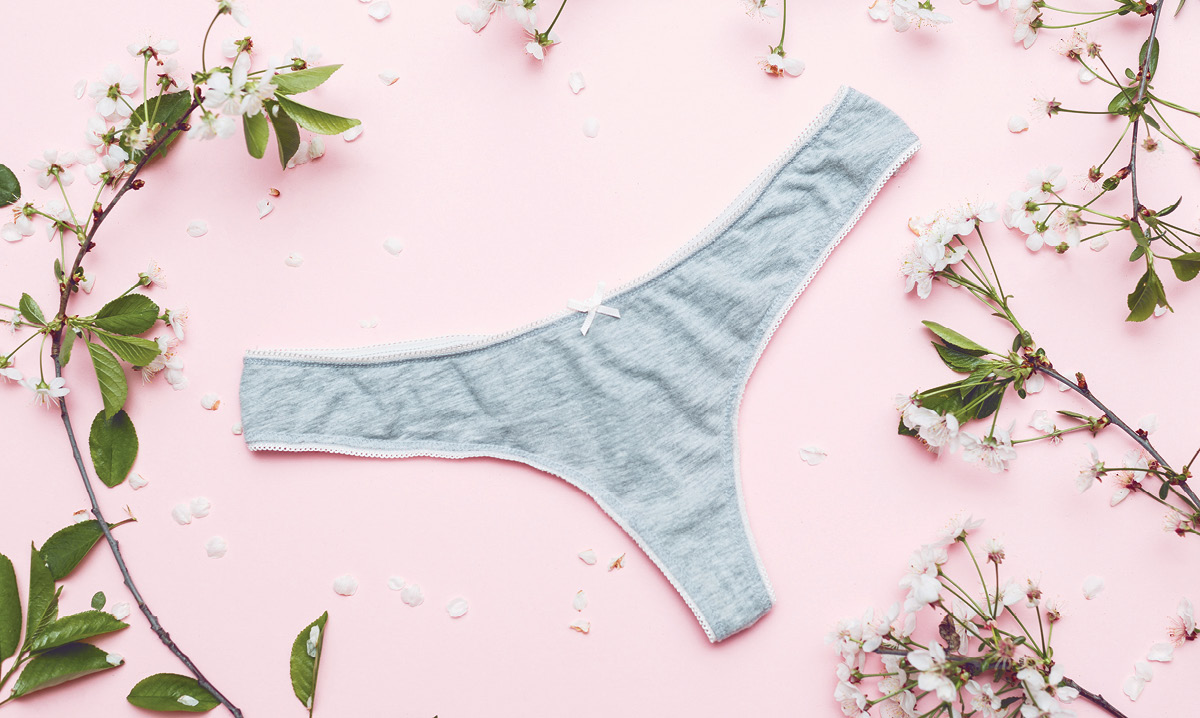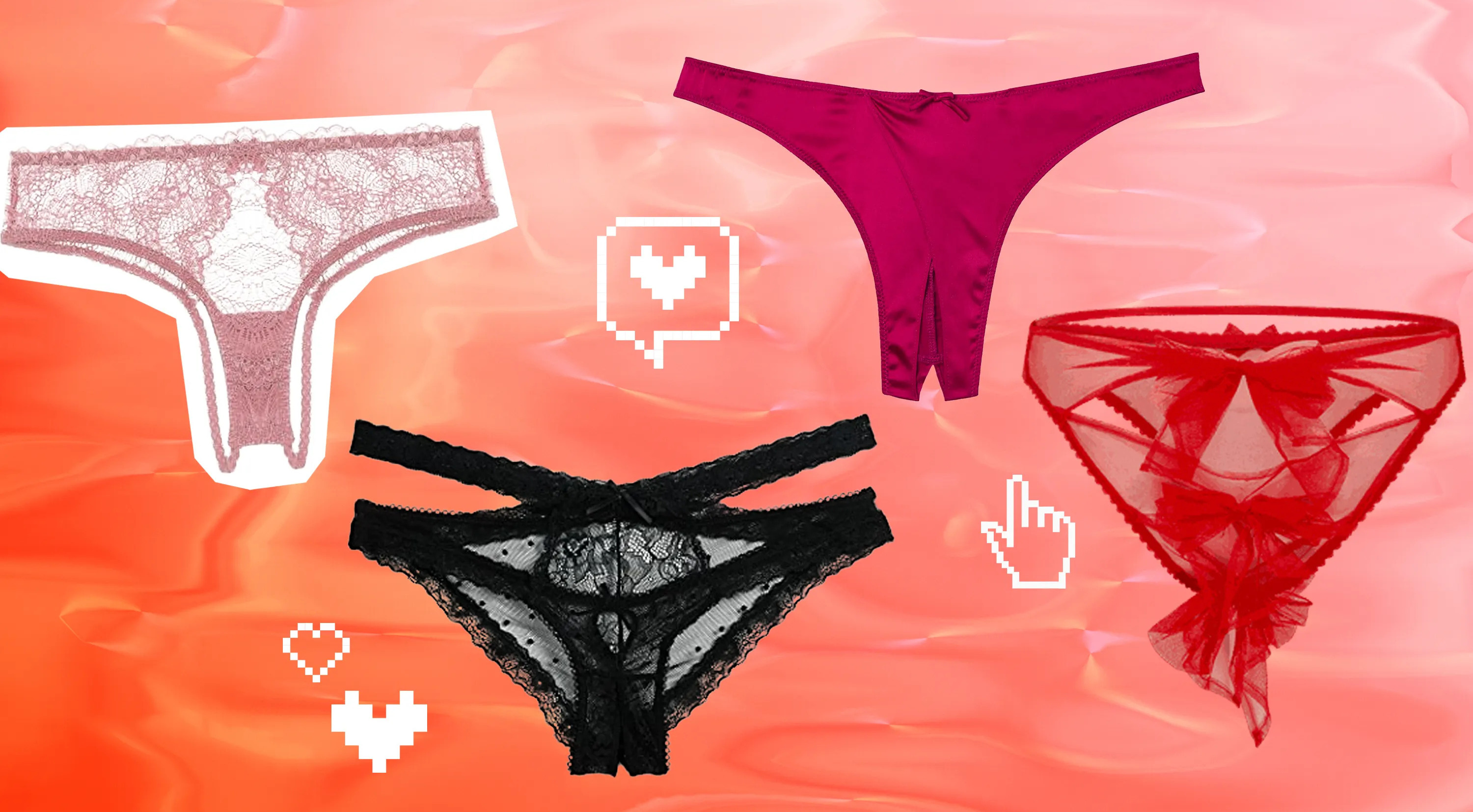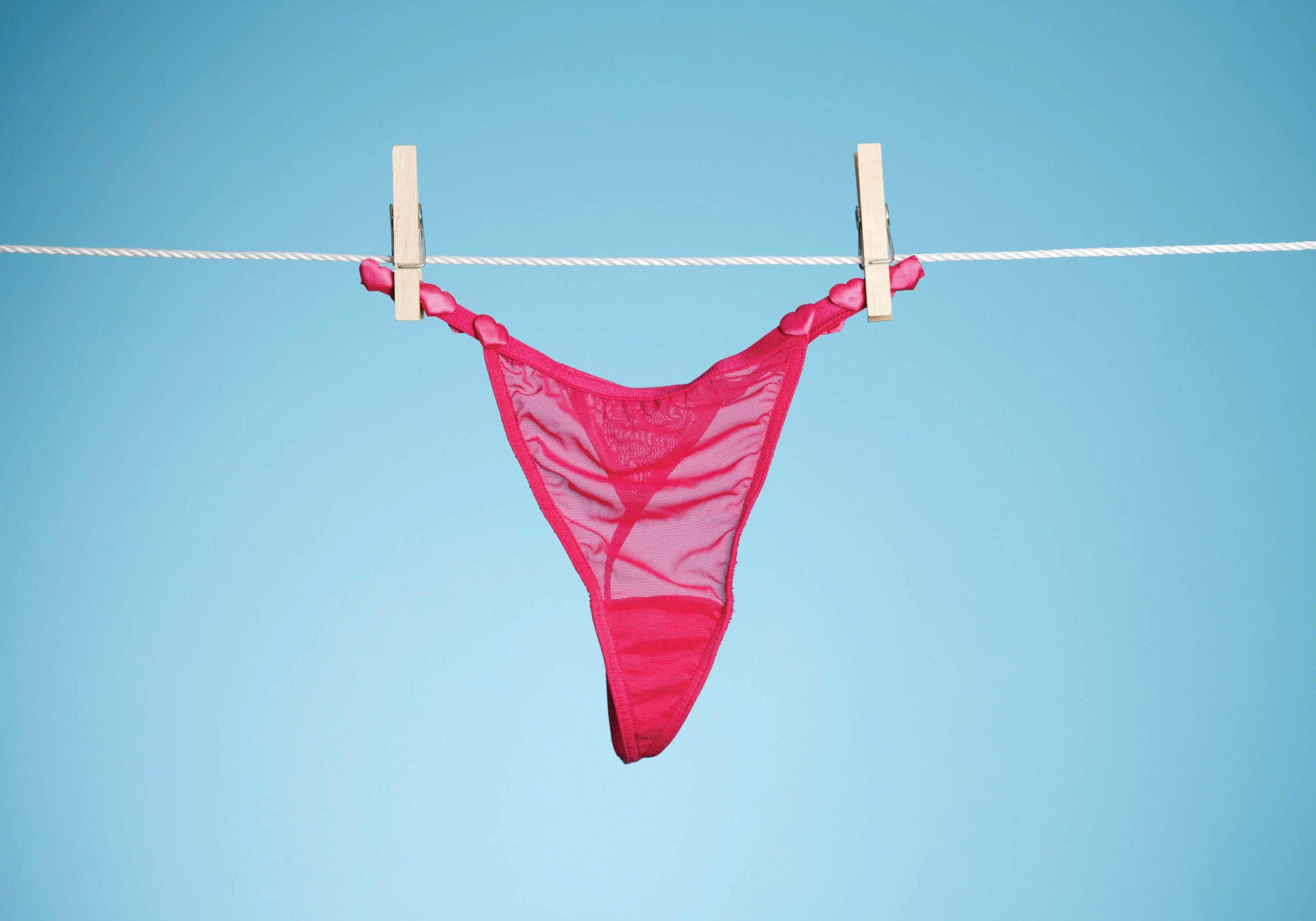Home>Women's Underwear>Thongs>What Is Thong Underwear
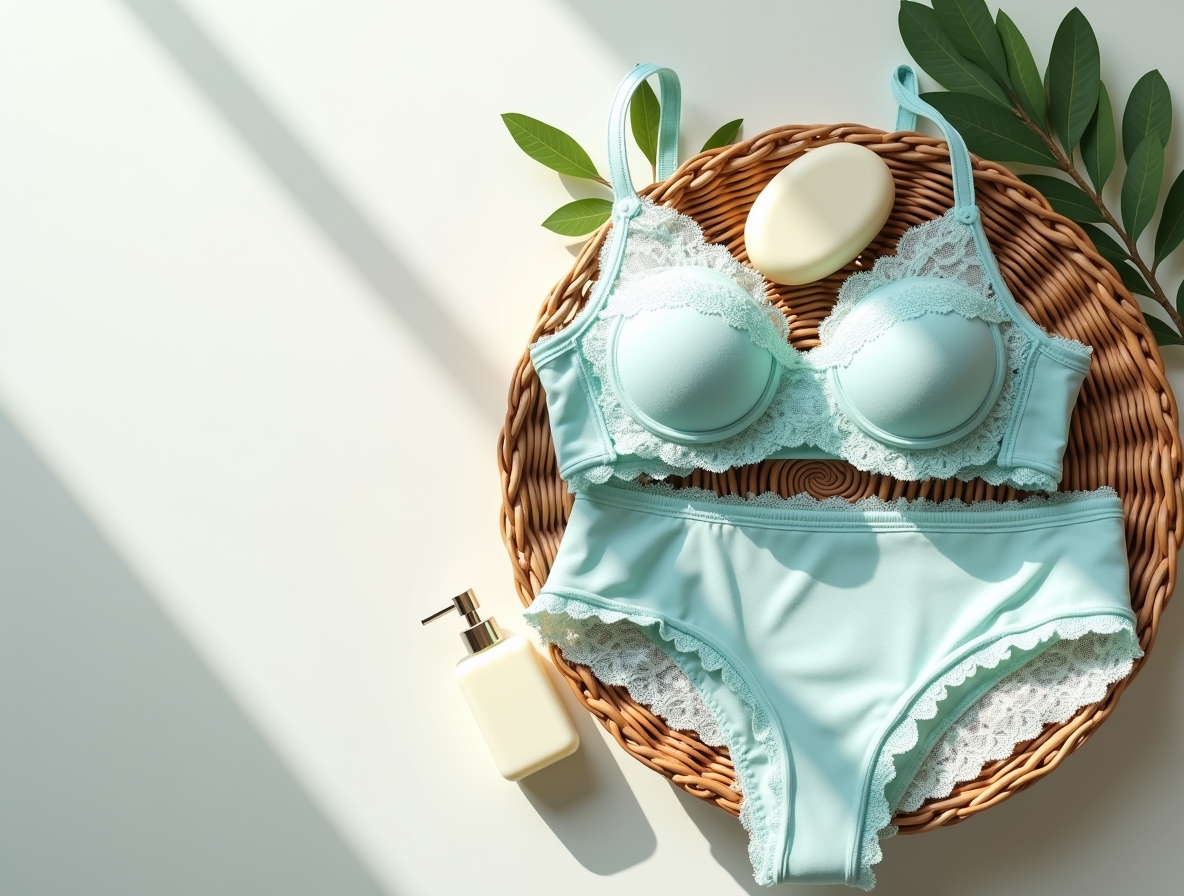

Thongs
What Is Thong Underwear
Modified: September 23, 2023
Discover everything you need to know about thong underwear in this informative article. Learn about the various styles, materials, and benefits of wearing thongs.
(Many of the links in this article redirect to a specific reviewed product. Your purchase of these products through affiliate links helps to generate commission for Under-tec.com, at no extra cost. Learn more)
Table of Contents
Introduction
Welcome to the world of thong underwear! This small yet significant undergarment has made quite a name for itself in the fashion industry. Known for its minimalistic design and unique style, thong underwear has gained popularity among both men and women over the years.
Whether you’re seeking to add a touch of sensuality to your lingerie collection or simply want to avoid visible panty lines, thong underwear offers a solution that combines comfort with a hint of allure.
In this article, we will delve into the fascinating world of thong underwear, exploring its definition, history, different types, benefits and drawbacks, how to choose the right size, proper care and maintenance, and debunking common myths and misconceptions. By the end, you will have a comprehensive understanding of thong underwear that will help you make informed decisions when it comes to incorporating it into your wardrobe.
So, whether you’re a thong enthusiast or just curious to learn more about this divisive undergarment, let’s embark on a journey to explore the ins and outs of thong underwear, unraveling the mystery behind its popularity and dispelling any doubts or misconceptions along the way.
Definition of Thong Underwear
Thong underwear is a type of undergarment that provides minimal coverage while still offering support and comfort. It is characterized by a narrow strip of fabric that runs between the buttocks, leaving the backside exposed. The front section of a thong typically resembles regular underwear, with a triangular or rectangular piece of fabric that covers the genital area.
Thongs are designed to sit low on the hips or waist, depending on the style, and the side straps provide additional stability and support. The main feature of thong underwear is the thin strip of fabric that runs between the buttocks, which is meant to eliminate visible panty lines when wearing tight-fitting clothing.
Thong underwear is available in a variety of materials, including cotton, lace, satin, and microfiber. Each material offers its own unique benefits, from breathability and comfort to a sleek and sensual look. Some thongs also come with decorative elements such as bows, ribbons, or embellishments, adding a touch of personal style and flair.
While thong underwear is commonly associated with women’s lingerie, there are also thongs available for men. Men’s thongs generally have a wider waistband and more substantial coverage in the front, while still maintaining the signature narrow strip at the back.
The popularity of thong underwear can be attributed to its seamless design, which eliminates visible panty lines and provides a smooth and polished look under tight-fitting or sheer clothing. This makes thongs a popular choice for special occasions, form-fitting outfits, and anyone who prefers a minimalist and discreet undergarment.
Overall, thong underwear offers a unique blend of style, sexiness, and functionality. It has become a staple in many people’s lingerie collection and continues to be a popular choice for those seeking comfort, versatility, and a touch of sensuality in their everyday wear.
History of Thong Underwear
The history of thong underwear dates back thousands of years, with evidence of similar garments found in ancient civilizations such as Egypt, Greece, and Rome.
In ancient Egypt, both men and women wore a loincloth known as the schenti, which consisted of a narrow strip of fabric that was wrapped around the hips and passed between the legs. This early form of thong provided minimal coverage while allowing for freedom of movement.
In ancient Greece, a similar garment called the perizoma was worn by athletes competing in the Olympic Games. It was made from leather and designed to provide support and enhance performance. The perizoma would later evolve into the subligaculum, a type of loincloth worn by Roman men.
Fast forward to the 20th century, and thong underwear began to gain popularity as a symbol of sensuality and liberation. In the 1930s, the bikini, which featured a thong-style bottom, caused a sensation when introduced to the public. However, it faced significant backlash and was even banned in some countries due to its revealing nature.
It wasn’t until the late 1970s and early 1980s that the thong started to become more widely accepted. Rudi Gernreich, a fashion designer, is often credited with popularizing thong underwear for women during this time. His designs, including the “No Bra” and “No Panty” ensembles, challenged societal norms and pushed the boundaries of lingerie fashion.
In the 1990s, thong underwear exploded in popularity thanks to the influence of pop culture and celebrities. Supermodels like Naomi Campbell and Tyra Banks helped to popularize thongs on the runway, while iconic moments like the emergence of the red carpet “whale tail” trend further boosted its visibility.
Today, thong underwear has become a staple in the lingerie industry, with a wide range of styles, colors, and fabrics available. It has evolved from a symbol of rebellion to a mainstream item that appeals to individuals of all ages and backgrounds.
While thong underwear still retains its association with sexuality and seduction, it has also become a practical choice for those seeking comfort and versatility. With its seamless design and elimination of visible panty lines, the thong has cemented its place in fashion history as a garment that combines style, functionality, and a touch of allure.
Different Types of Thong Underwear
Thong underwear comes in various styles and designs to cater to different preferences and needs. Whether you’re looking for something sexy, comfortable, sporty, or practical, there’s a thong out there for you. Let’s explore some of the most common types:
- G-String: The G-string is the most revealing type of thong underwear. It consists of a thin string at the back that leaves the buttocks mostly exposed. The front panel provides minimal coverage, with a narrow strip of fabric that covers the genital area. G-strings are often worn for special occasions or to add a touch of seduction to the bedroom.
- T-Back: The T-back thong, also known as a Tanga, features a wider strip of fabric at the back compared to the G-string. The back of the thong forms a T shape, with the vertical strip of fabric running down between the buttocks. T-back thongs offer a bit more coverage while still maintaining a sexy and minimalistic aesthetic.
- V-String: The V-string is a variation of the thong with a triangular-shaped front panel. The sides and back consist of thin strings, creating a V shape at the back. This style provides a more flattering look by accentuating the natural curves of the body.
- Rio Thong: The Rio thong features a wider waistband and provides more coverage compared to other thong styles. It typically sits higher on the hips, offering a comfortable fit with a hint of allure. Rio thongs are favored for everyday wear and are an excellent choice for those seeking a balance between coverage and sexiness.
- Boyshort Thong: The boyshort thong combines the coverage of boyshorts with the minimalistic design of a thong. It features a wider waistband and extends further down the hips, providing more coverage at the back while still eliminating visible panty lines. Boyshort thongs are popular for their comfort and versatility, making them a great choice for everyday wear.
- Sport Thong: For those active individuals who prioritize comfort and support during physical activities, sport thongs are designed to stay in place and provide breathability. They are made from moisture-wicking materials that keep you cool and dry, making them ideal for workouts and sporty pursuits.
These are just a few examples of the different types of thong underwear available. Each style offers its own unique features and benefits, allowing you to find the perfect thong that suits your personal style, comfort level, and desired level of coverage.
Pros and Cons of Wearing Thong Underwear
Like any other clothing item, thong underwear has its advantages and disadvantages. Understanding the pros and cons can help you make an informed decision on whether thongs are the right choice for you. Let’s explore them:
Pros:
- No Visible Panty Lines (VPL): One of the main benefits of thong underwear is the elimination of visible panty lines. The narrow strip of fabric at the back avoids any unwanted lines, making thongs perfect for wearing under tight or sheer clothing.
- Sensual and Sexy: Thongs are often associated with sensuality and can make you feel attractive and confident. They can add a touch of allure to your lingerie collection or spice up special occasions.
- Comfort: When chosen in the right size and fabric, thong underwear can be surprisingly comfortable. The minimalistic design and lightweight materials allow for breathability and freedom of movement.
- Versatility: Thongs come in a variety of styles, colors, and fabrics, making them a versatile option for different outfits and occasions. Whether you’re dressing up for a night out or looking for a practical everyday undergarment, there’s a thong that suits your needs.
- Enhanced Confidence: Wearing a thong can provide a confidence boost. Knowing that you have chosen a stylish and sexy undergarment can have a positive impact on your self-image and overall confidence level.
Cons:
- Adjustment: Thongs may require some adjustment throughout the day to ensure comfort and proper placement. The narrow strip of fabric at the back can sometimes shift or cause discomfort if not positioned correctly.
- Potential Hygiene Concerns: Some individuals may be concerned about the potential hygiene issues associated with thong underwear. The minimal coverage and close contact with the genital area can lead to an increased risk of bacterial infections or irritation.
- Preference and Comfort: Thong underwear may not be comfortable for everyone. Some individuals may simply not enjoy the feeling of having a thong between their buttocks. It ultimately comes down to personal preference and finding the right style and fit that works for you.
- Not Ideal for Certain Activities: While thongs can be suitable for everyday wear and many occasions, they may not be the best choice for certain activities, such as intense physical workouts or extended periods of sitting. In such cases, opting for a more supportive or comfortable underwear style may be more appropriate.
Ultimately, the decision to wear thong underwear is a personal one. Consider your comfort level, style preferences, and the specific activity or outfit you have in mind. By weighing the pros and cons, you can make an informed choice on whether thongs align with your individual needs and preferences.
How to Choose the Right Thong Underwear Size
When it comes to selecting thong underwear, finding the right size is crucial for comfort, proper fit, and overall satisfaction. Follow these guidelines to ensure you choose the perfect size:
- Measure your waist and hips: Use a measuring tape to determine your waist and hip measurements. This will be helpful in finding your size based on the manufacturer’s sizing chart.
- Refer to the sizing chart: Each brand may have slightly different sizing standards, so always consult the brand’s sizing chart to find your appropriate size. Pay attention to both your waist and hip measurements, as thong underwear may sit at different points on your body.
- Consider the stretch: Thong underwear materials can vary in terms of stretchiness. If you are between sizes or unsure, consider sizing up for a more relaxed fit or down for a snugger fit. Keep in mind that thongs should never be overly tight or digging into your skin.
- Pay attention to the waistband: Thongs come with various waistband styles, including low-rise, mid-rise, and high-rise. Choose a waistband that feels comfortable and fits your personal preference. The waistband should sit securely but not too tightly on your waist or hips.
- Try different styles: Different thong styles may fit differently, so don’t be afraid to experiment and try on different styles to find the one that suits your body shape and comfort level.
- Consider fabric preferences: Different fabrics will have different levels of stretch, breathability, and comfort. If you have sensitive skin, opt for softer materials like cotton or modal. For a more luxurious feel, consider lace or silk options.
- Take into account your body shape: Keep in mind that certain thong styles may be more flattering or comfortable based on your body shape. For example, a high-cut thong can elongate the legs, while a boyshort thong offers more coverage for those who prefer it.
- Read reviews: Before making a purchase, read customer reviews to see if the brand or style runs true to size or if any adjustments need to be made.
Remember, finding the right thong underwear size takes trial and error, and what works for someone else may not work for you. Don’t be discouraged if the first pair you try doesn’t fit perfectly. With a bit of patience and exploration, you’ll soon find thong underwear that fits you like a dream, providing both comfort and confidence.
Proper Care and Maintenance of Thong Underwear
To keep your thong underwear in good condition and extend its lifespan, it’s essential to follow proper care and maintenance practices. Here are some tips to keep in mind:
- Follow washing instructions: Always check the care label on your thong underwear for specific washing instructions. Some fabrics may require hand washing, while others can be machine washed on a delicate or gentle cycle. Using the appropriate washing method will help preserve the quality and integrity of the fabric.
- Separate colors: To prevent color bleeding or transfer, it’s recommended to wash thongs in similar colors together. Separate dark and light-colored thongs to avoid any potential discoloration.
- Avoid harsh detergents: Opt for mild, gentle detergents that are specifically formulated for delicate garments. Harsh detergents can cause fabric damage or fading over time.
- Hand wash delicate fabrics: If your thong underwear is made from delicate materials like lace or silk, hand washing is often the best method to ensure their longevity. Use lukewarm water and a mild detergent, and gently agitate the thongs without rubbing or wringing them.
- Avoid excessive heat: Thongs should not be exposed to high heat, such as in a dryer or under direct sunlight. Heat can damage the elasticity and structure of the fabric, leading to shrinkage or distortion. Air drying is typically the best option for thong underwear.
- Store properly: After washing and air-drying, store thong underwear in a designated drawer or storage container. Avoid cramming or folding them tightly, as this can lead to wrinkles, creases, and stretching. Ideally, lay your thongs flat or fold them gently to maintain their shape.
- Rotate your thongs: To prevent excessive wear and maintain elasticity, it’s a good idea to rotate your thong underwear regularly. This allows each pair to rest and recover between wearings, prolonging their lifespan.
- Replace as needed: Over time, thong underwear may show signs of wear and tear, such as stretched elastic or thinning fabric. Once they no longer provide the desired comfort or support, it’s time to replace them with new ones.
By following these care and maintenance practices, you can ensure that your thong underwear remains in excellent condition, providing you with optimal fit, comfort, and style.
Common Myths and Misconceptions about Thong Underwear
Thong underwear has garnered its fair share of myths and misconceptions over the years. Let’s debunk some of the most common ones:
- Myth 1: Thongs are only for slim or fit individuals. This is far from true. Thongs can be worn and enjoyed by individuals of all body shapes and sizes. It’s all about finding the right size and style that makes you feel comfortable and confident.
- Myth 2: Thongs are uncomfortable to wear. While comfort is subjective and can vary from person to person, thong underwear can be comfortable when chosen in the right size and made from breathable materials. The key is to find a thong that fits you properly and suits your personal preferences.
- Myth 3: Thongs are only worn for seduction or special occasions. Thongs are versatile and can be worn for a variety of occasions, from everyday wear to special events. They can be a practical choice to avoid visible panty lines or simply provide a discreet and comfortable undergarment option.
- Myth 4: Thongs are unhygienic. This is a common misconception. When wearing thong underwear, it’s important to maintain proper hygiene practices as you would with any other type of underwear. Regularly washing your thongs and practicing good personal hygiene will ensure cleanliness and reduce any concerns.
- Myth 5: Thongs are only for younger individuals. Thongs are not limited to any age group. People of all ages can enjoy and wear thong underwear if they feel comfortable and confident in them. Age should not be a determining factor in your choice of undergarments.
- Myth 6: Thongs are just for women. Thongs are often associated with women’s lingerie, but there are also thong underwear options available for men. Men’s thongs typically have a different design and provide more coverage in the front, catering to their specific needs and preferences.
It’s important to remember that the choice to wear thong underwear is personal, and everyone’s experience and preferences may vary. Don’t let these misconceptions deter you from trying thongs or enjoying them if you already do. Explore different styles and sizes to find the perfect fit and embrace the comfort, confidence, and style that thong underwear can provide.
Conclusion
Thong underwear has undoubtedly left a lasting mark on the world of fashion. From ancient civilizations to modern society, thongs have evolved and gained popularity for their unique style, functionality, and sensuality. They offer a minimalistic yet alluring option for those looking to avoid visible panty lines or add a touch of excitement to their lingerie collection.
Throughout this article, we have explored the definition of thong underwear, delved into its fascinating history, discussed the different types available, and examined both the pros and cons of wearing them. We also provided tips on how to choose the right size, care for and maintain your thong underwear, and debunked common myths and misconceptions.
Ultimately, whether you choose to wear thong underwear or not is a personal decision. Comfort, confidence, and personal style are key factors to consider. It’s essential to find the right size, style, and fabric that align with your preferences and needs.
Thong underwear continues to be a popular choice for those who value comfort, versatility, and a hint of sensuality. The range of styles and designs available ensures that everyone can find a thong that suits their body shape, style preferences, and level of coverage desired.
So, whether you’re a thong enthusiast or simply curious to try something new, don’t hesitate to explore this diverse and exciting world of thong underwear. Embrace the confidence, comfort, and allure that thong underwear can provide and enjoy the journey of finding the perfect fit that makes you feel fabulous in every way.

